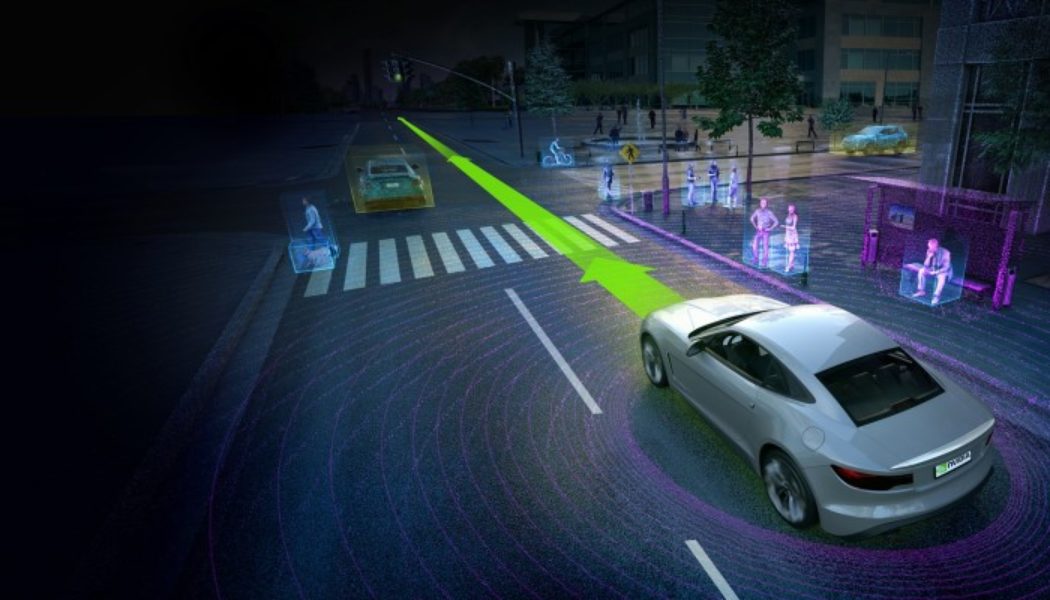Accelerating the race to autonomous cars, NVIDIA today launched NVIDIA DRIVE™ PX 2 – the world’s most powerful engine for in-vehicle artificial intelligence.
NVIDIA DRIVE PX 2 allows the automotive industry to use artificial intelligence to tackle the complexities inherent in autonomous driving. It utilizes deep learning on NVIDIA’s most advanced GPUs for 360-degree situational awareness around the car, to determine precisely where the car is and to compute a safe, comfortable trajectory.
“Drivers deal with an infinitely complex world,” said Jen-Hsun Huang, co-founder and CEO, NVIDIA. “Modern artificial intelligence and GPU breakthroughs enable us to finally tackle the daunting challenges of self-driving cars.
“NVIDIA’s GPU is central to advances in deep learning and supercomputing. We are leveraging these to create the brain of future autonomous vehicles that will be continuously alert, and eventually achieve superhuman levels of situational awareness. Autonomous cars will bring increased safety, new convenient mobility services and even beautiful urban designs – providing a powerful force for a better future.”
24 Trillion Deep Learning Operations per Second
Created to address the needs of NVIDIA’s automotive partners for an open development platform, DRIVE PX 2 provides unprecedented amounts of processing power for deep learning, equivalent to that of 150 MacBook Pros
Its two next-generation Tegra® processors plus two next-generation discrete GPUs, based on the Pascal™ architecture, deliver up to 24 trillion deep learning operations per second, which are specialized instructions that accelerate the math used in deep learning network inference. That’s over 10 times more computational horsepower than the previous-generation product.
DRIVE PX 2’s deep learning capabilities enable it to quickly learn how to address the challenges of everyday driving, such as unexpected road debris, erratic drivers and construction zones. Deep learning also addresses numerous problem areas where traditional computer vision techniques are insufficient – such as poor weather conditions like rain, snow and fog, and difficult lighting conditions like sunrise, sunset and extreme darkness.
For general purpose floating point operations, DRIVE PX 2’s multi-precision GPU architecture is capable of up to 8 trillion operations per second. That’s over four times more than the previous-generation product. This enables partners to address the full breadth of autonomous driving algorithms, including sensor fusion, localization and path planning. It also provides high-precision compute when needed for layers of deep learning networks.
Deep Learning in Self-Driving Cars
Self-driving cars use a broad spectrum of sensors to understand their surroundings. DRIVE PX 2 can process the inputs of 12 video cameras, plus lidar, radar and ultrasonic sensors. It fuses them to accurately detect objects, identify them, determine where the car is relative to the world around it, and then calculate its optimal path for safe travel.
This complex work is facilitated by NVIDIA DriveWorks™, a suite of software tools, libraries and modules that accelerates development and testing of autonomous vehicles. DriveWorks enables sensor calibration, acquisition of surround data, synchronization, recording and then processing streams of sensor data through a complex pipeline of algorithms running on all of the DRIVE PX 2’s specialized and general-purpose processors. Software modules are included for every aspect of the autonomous driving pipeline, from object detection, classification and segmentation to map localization and path planning.
End-to-End Solution for Deep Learning
NVIDIA delivers an end-to-end solution – consisting of NVIDIA DIGITS™ and DRIVE PX 2 – for both training a deep neural network, as well as deploying the output of that network in a car.
DIGITS is a tool for developing, training and visualizing deep neural networks that can run on any NVIDIA GPU-based system – from PCs and supercomputers to Amazon Web Services and the recently announced Facebook Big Sur Open Rack-compatible hardware. The trained neural net model runs on NVIDIA DRIVE PX 2 within the car.
Strong Market Adoption
Since NVIDIA delivered the first-generation DRIVE PX last summer, more than 50 automakers, tier 1 suppliers, developers and research institutions have adopted NVIDIA’s AI platform for autonomous driving development. They are praising its performance, capabilities and ease of development.
“Using NVIDIA’s DIGITS deep learning platform, in less than four hours we achieved over 96 percent accuracy using Ruhr University Bochum’s traffic sign database. While others invested years of development to achieve similar levels of perception with classical computer vision algorithms, we have been able to do it at the speed of light.”
— Matthias Rudolph, director of Architecture Driver Assistance Systems at Audi
“BMW is exploring the use of deep learning for a wide range of automotive use cases, from autonomous driving to quality inspection in manufacturing. The ability to rapidly train deep neural networks on vast amounts of data is critical. Using an NVIDIA GPU cluster equipped with NVIDIA DIGITS, we are achieving excellent results.”
— Uwe Higgen, head of BMW Group Technology Office USA
“Due to deep learning, we brought the vehicle’s environment perception a significant step closer to human performance and exceed the performance of classic computer vision.”
— Ralf G. Herrtwich, director of Vehicle Automation at Daimler
“Deep learning on NVIDIA DIGITS has allowed for a 30X enhancement in training pedestrian detection algorithms, which are being further tested and developed as we move them onto NVIDIA DRIVE PX.”
— Dragos Maciuca, technical director of Ford Research and Innovation Center
The DRIVE PX 2 development engine will be generally available in the fourth quarter of 2016. Availability to early access development partners will be in the second quarter.
And for more news and reviews, keep checking back at Gaming Central.




